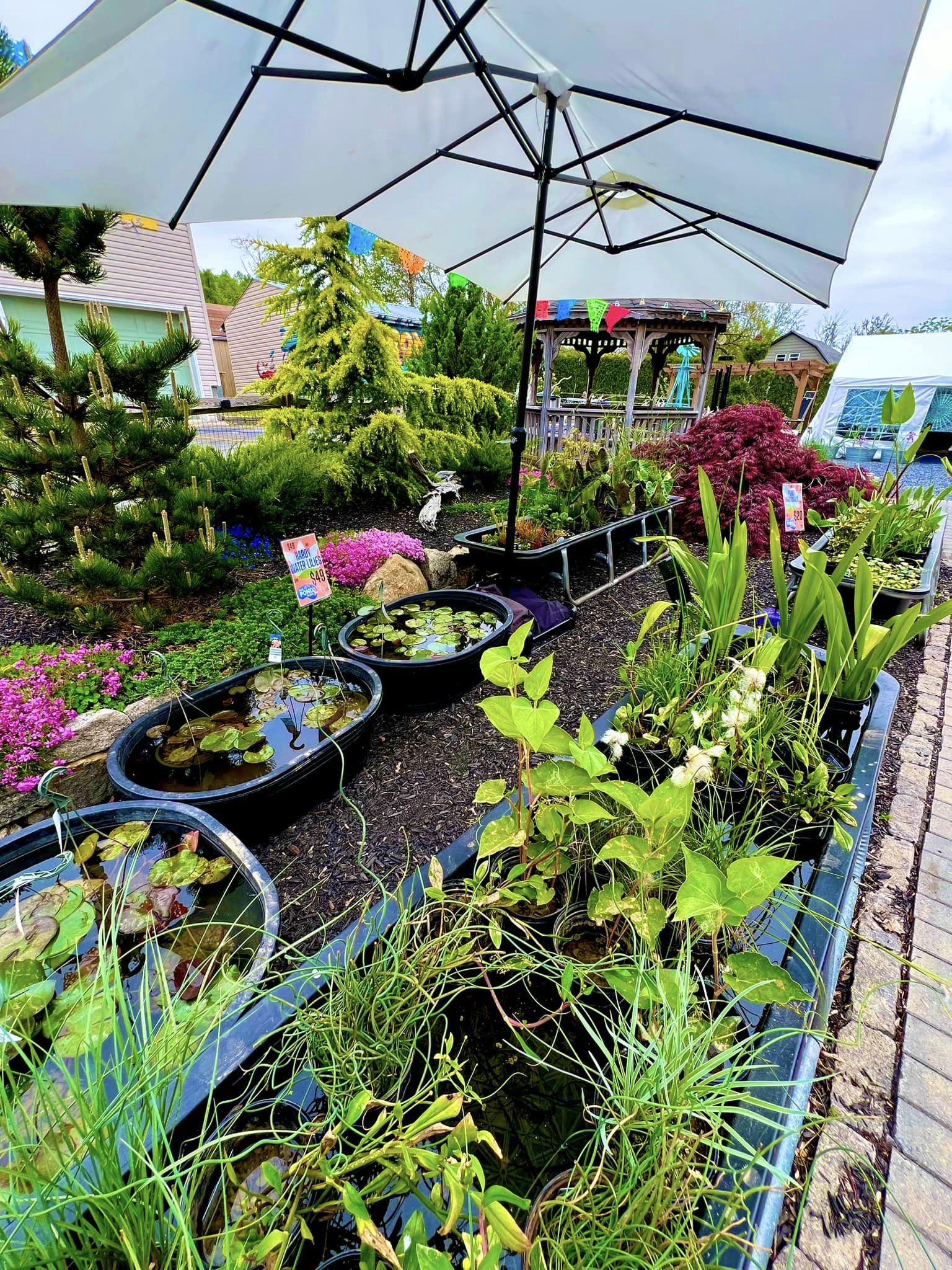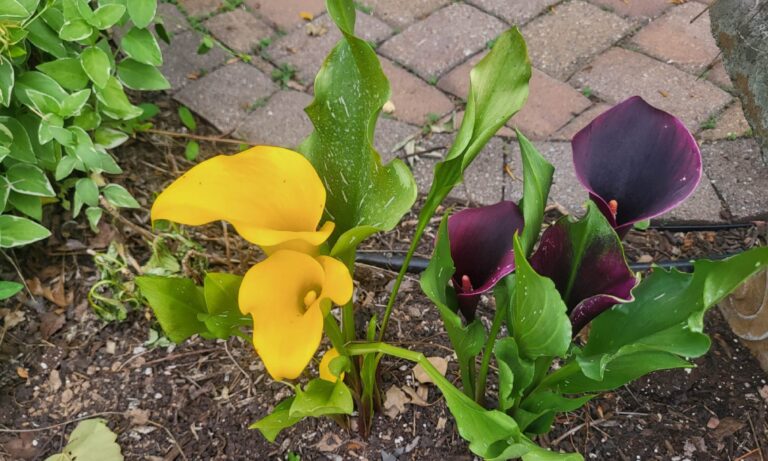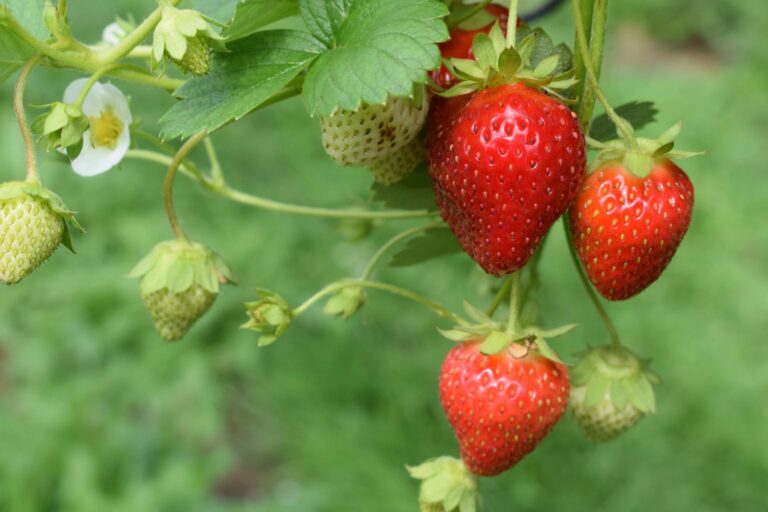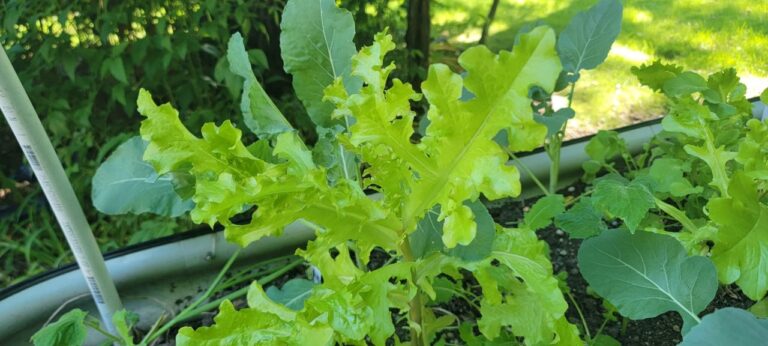Low-Carbon Footprint Gardening: 3 Exclusive Ways to Reduce Waste & More
Introduction
I must admit that I have limited knowledge about low-carbon footprint gardening. Gardening is widely recognized as an activity that not only nurtures plants but also enriches our connection to nature and promotes overall well-being. Yet, it’s important to note that not all gardening practices are environmentally sustainable. Some techniques can have a significant impact on our planet, while others prioritize ecological balance and sustainability.
Conventional gardening methods frequently require chemical fertilizers, a lot of water, and energy-intensive tools, which all contribute to carbon emissions. In contrast, low-carbon footprint gardening emphasizes environmentally responsible approaches that reduce greenhouse gas (GHG) emissions while boosting biodiversity and soil health. Gardeners may grow lush, productive environments while minimizing their environmental impact by making informed decisions.
Understanding Carbon Footprint in Gardening
A carbon footprint is the entire amount of greenhouse gases emitted by humans, including carbon dioxide (CO₂), methane (CH₄), and nitrous oxide (N₂O). Gardening emissions occur from various sources, including plant and material transportation, synthetic fertilizer use, energy usage, and waste generation. Addressing these elements through sustainable practices has the potential to considerably minimize environmental impact.
Soil Management for Carbon Sequestration
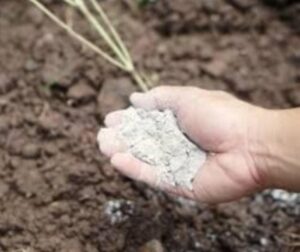
Healthy soil is essential for sequestering carbon from the atmosphere. Soil‘s organic matter, made up of degraded plant and microbial material, acts as a carbon sink, absorbing and storing CO₂. Gardeners can optimize carbon storage by implementing the following techniques:
1. No-Till Gardening
Traditional tilling alters soil structure and speeds up the release of carbon contained in organic materials. Instead, no-till gardening reduces soil disturbance, allowing microbial populations to thrive and absorb carbon. Mulching and cover cropping help to preserve soil moisture and avoid erosion.
2. Composting and Organic Amendments
Composting organic waste diverts material from landfills and enriches soil with carbon-rich humus. Natural additives such as biochar, worm castings, and aged manure boost microbial activity, which improves nutrient cycling and carbon sequestration.
3. Cover Crops and Green Manures
Cover crops, such as clover, rye, and legumes, help to minimize soil degradation by naturally fixing atmospheric nitrogen and preventing erosion. When they are integrated into the soil, they add organic matter, which increases carbon retention.
Water Conservation Strategies
Water-intensive farming increases energy consumption from irrigation systems. Using water-efficient methods decreases both water waste and associated emissions.
1. Rainwater Harvesting
Collecting rainwater in barrels reduces reliance on municipal water supplies, lowering the energy necessary for water treatment and delivery.
2. Drip Irrigation and Soaker Hoses
Unlike regular sprinklers, drip irrigation directs water to plant roots, reducing evaporation and runoff. Soaker hoses work similarly by gradually delivering water to the earth.
3. Mulching
Organic mulches like straw, wood chips, and leaves regulate soil temperature, retain moisture, and suppress weeds, requiring less watering.
Sustainable Plant Selection
The type of plants used in a garden determines its carbon footprint. Choosing regionally appropriate species and climate robust types can considerably reduce emissions:
1. Native and Drought-Resistant Plants
Native plants use fewer resources because they are naturally adapted to the local climate. Succulents and deep-rooted perennials are drought-resistant species that consume less water.
2. Perennials vs. Annuals
Perennials, which return year after year without replanting, use less energy for propagation and soil disturbance than annuals, making them a more sustainable choice.
3. Edible Landscaping
Incorporating edible plants like fruit trees, herbs, and vegetables into attractive gardens promotes local food production while lowering emissions related to food transportation.
Eco-Friendly Gardening Tools and Materials
Reducing reliance on fossil fuel-powered equipment and synthetic materials reduces a garden’s carbon footprint:
1. Hand Tools Over Power Tools
Opting for manual tools like push mowers, hoes, and spades instead of their gas-powered counterparts not only gives you a great workout but also makes a significant impact on reducing emissions. It’s a win-win for your garden and the planet!
2. Sustainable Mulch and Soil Amendments
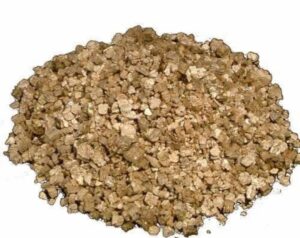
Choosing locally sourced mulch and compost not only benefits our gardens but also significantly reduces transportation-related emissions. That’s a win for the environment! Plus, making your compost is a simple and rewarding endeavor that anyone can tackle. Steering clear of peat-based products, we can help protect precious peatlands and minimize our carbon footprint. Let’s do our part and make a positive impact on our planet!
3. Reclaimed and Recycled Materials
Transforming discarded materials into raised beds, trellises, and pathways not only sparks creativity but also helps conserve our precious resources. By breathing new life into what would otherwise end up in landfills, we take meaningful steps toward sustainability and reduce waste in our communities. Let’s get crafty and make our gardens flourish while protecting the planet!
Supporting Pollinators and Biodiversity

Biodiversity plays a vital role in maintaining the balance of our ecosystems and enhancing carbon sequestration. Imagine a vibrant garden filled with a variety of plants; it not only looks beautiful but also attracts a host of beneficial insects, birds, and microbes. This diverse environment creates a thriving, self-sustaining ecosystem that supports life and promotes stability. Embracing biodiversity in our gardens is a key step toward nurturing the natural world around us!
1. Pollinator-Friendly Planting
Transform your garden into a vibrant haven for pollinators by planting an array of nectar-rich flowers! Think about adding the fragrant allure of lavender, the bright cheer of sunflowers, and the delicate beauty of milkweed. These flowers not only attract bees, butterflies, and other essential pollinators but also play a crucial role in ensuring the health and reproduction of our beloved plants. So let your garden buzz with life and color.
2. Habitat Creation
Creating brush piles, constructing charming birdhouses, and nurturing hedgerows are all wonderful ways to provide a thriving habitat for wildlife. These simple actions not only beautify our surroundings but also play a crucial role in fostering ecological balance. Let’s embrace these practices and invite nature into our gardens!
3. Integrated Pest Management (IPM)
Opting for natural pest control methods instead of chemical pesticides can benefit the environment. Gardeners can effectively manage pest populations by introducing beneficial insects, such as ladybugs and lacewings without resorting to harmful chemicals. Additionally, employing companion planting—where specific plants are grown together to enhance each other’s growth or repel pests—can create a more balanced ecosystem. These natural strategies reduce the risk of toxic runoff into waterways and contribute to healthier soil, promoting long-term fertility and sustainability in gardening practices.
Reducing Waste and Carbon Emissions
Waste management is an important part of low-carbon gardening. Implementing circular systems reduces emissions from waste disposal and external inputs.
1. Zero-Waste Gardening
Transforming kitchen leftovers into compost is a great way to minimize waste and enhance soil health. By collecting vegetable scraps, fruit peels, and coffee grounds, you can create nutrient-rich compost that nourishes your garden. Additionally, reusing plant pots instead of discarding them helps reduce plastic waste. These pots can serve multiple purposes, such as starting new seedlings or housing plants until they’re ready for transplanting. Furthermore, gathering fallen leaves during the autumn season provides an excellent source of organic mulch. This mulch can protect the soil from erosion, regulate temperature, and retain moisture, contributing to a sustainable closed-loop system that promotes environmental health and reduces waste.
2. Vermicomposting
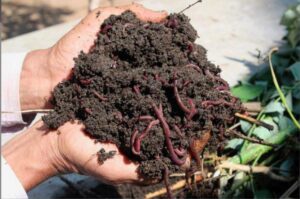
Worm composting is a fascinating process that transforms organic waste into a goldmine for your garden! By harnessing the power of worms, this method speeds up the breakdown of food scraps, resulting in nutrient-rich castings that can enrich your soil. Plus, it plays a crucial role in reducing methane emissions from decaying waste in landfills. Embrace worm composting and turn your kitchen scraps into a sustainable solution for a greener planet!
3. Carbon-Neutral Landscaping Materials
Incorporating locally sourced stone, sustainably harvested wood, and permeable paving materials not only enhances the beauty of garden buildings but also significantly reduces embodied carbon. Embracing these eco-friendly choices is a step towards building a greener future while creating spaces that are both functional and aesthetically pleasing!
Community and Regenerative Practices
Gardening that promotes community relationships and regenerative agriculture ideas strengthens sustainability efforts:
1. Community Gardening and Urban Agriculture
Shared garden spaces reduce resource use per person while also improving local food security and lowering emissions from food transportation.
2. Regenerative Gardening Techniques
Practices like agroforestry, permaculture, and polyculture improve soil health, sequester carbon, and boost climate resilience.
3. Seed Saving and Plant Sharing
Preserving heirloom seeds and exchanging plants across communities lowers commercial need for resource-intensive nursery manufacturing and packaging.
Conclusion
Low-carbon footprint gardening is a way to reduce personal environmental effects and a step toward global sustainability. Gardeners may build resilient ecosystems that minimize climate change by focusing on soil health, conserving water, choosing sustainable plants, using eco-friendly tools, and embracing biodiversity. Every tiny adjustment adds to a bigger trend toward sustainable living, demonstrating that even the simplest home garden may help reduce carbon footprints. Anyone may grow a thriving garden while protecting the environment for future generations by engaging in continual learning and mindful activities.

